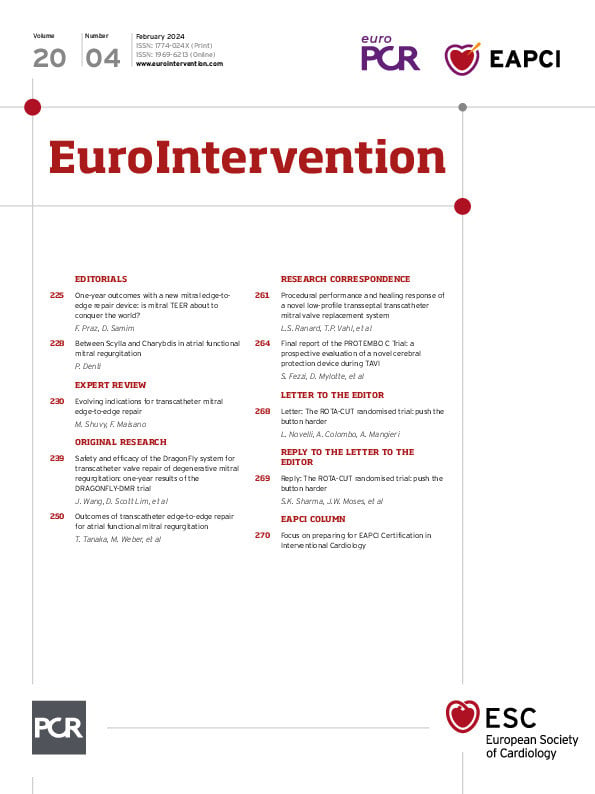In a recent issue of EuroIntervention, Sharma et al presented the results of the ROTA-CUT trial1. The aim of this study was to investigate whether combining rotational atherectomy with a cutting balloon (CB) or a non-compliant balloon (NCB) would result in improved procedural and clinical outcomes. The authors concluded that the results in the two arms were quite comparable, regardless of the strategy employed. However, the study does have some major limitations that could potentially convey an incomplete picture. In the study, the CB was used in accordance with the manufacturer’s instructions: the inflation pressure, as recommended, was 6 atm; and the balloon was sized 1:1 relative to the reference vessel diameter. In the earlier Cutting balloon to Optimize Predilation for Stent implantation (COPS) trial2, which evaluated the use of the CB for the treatment of moderate to severe coronary calcifications, results showed that the benefits of this device became evident when a high-pressure inflation strategy was tilized (18.3±5 atm), along with a 0.5 mm reduction in balloon size compared to the media-to-media diameter. In the COPS trial, the use of a high-pressure CB resulted in a larger minimum stent area (MSA) and more symmetric expansion of the stent at the level of the calcified segment, compared to those seen in the use of an NCB, regardless of the final overall MSA which was not statistically significant between the two arms. This high-pressure strategy was also employed in the PREPARE-CALC-COMBO study3, which led to higher acute lumen gain and a larger MSA when rotational atherectomy plus CB was compared to Rotablator (Boston Scientific) or scoring/CB angioplasty alone in severely calcified native coronary lesions.
Furthermore, the authors of the ROTA-CUT trial used a CB at an even lower pressure than that used for an NCB, which, in our view, is another major limitation. Moreover, in the ROTA-CUT study, the mean stent length was 38 mm and, due to the physiological tapering of the vessels, the distal landing area of the stent was smaller than the proximal one. Consequently, using the MSA as the primary endpoint could result in a misleading conclusion, since this area might be anatomically located in the distal part of the stent, and such an endpoint fails to accurately assess the lesion preparation achieved by the devices under study.
In these circumstances, an endpoint evaluating the MSA at the calcium site would perhaps have been more appropriate to identify which strategy would have performed better for lesion preparation in the context of highly diseased and calcified lesions.
Conflict of interest statement
A. Mangieri has received speaker fees from Boston Scientific, Abbott, and Edwards Lifesciences; he has also received an institutional grant from Boston Scientific and Abbott. L. Novelli has no significant conflicts of interest to declare. A. Colombo has no significant conflicts of interest to declare.

